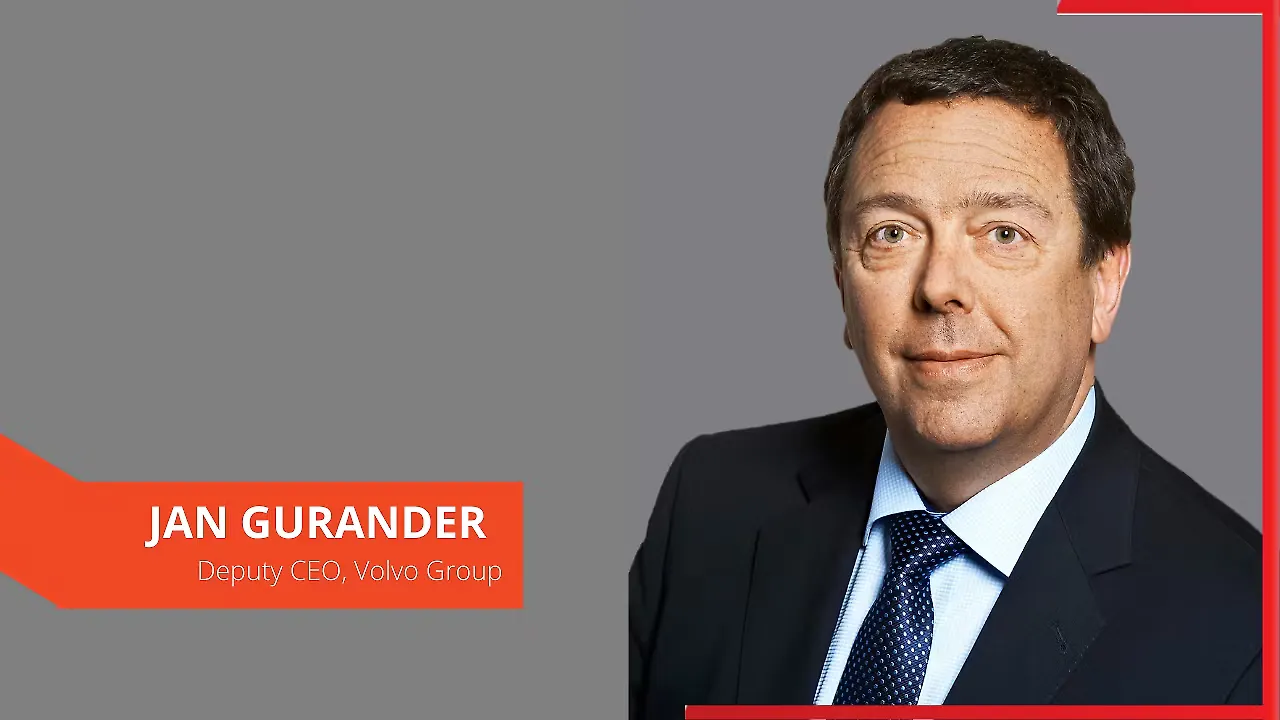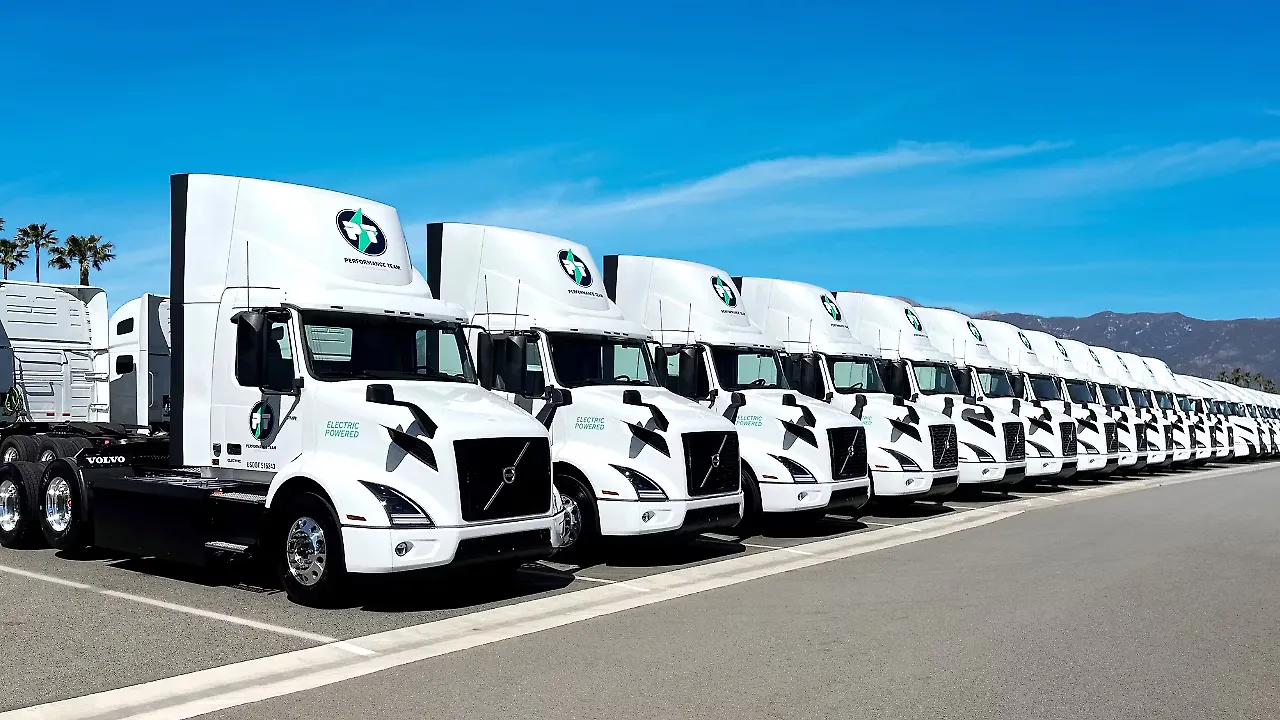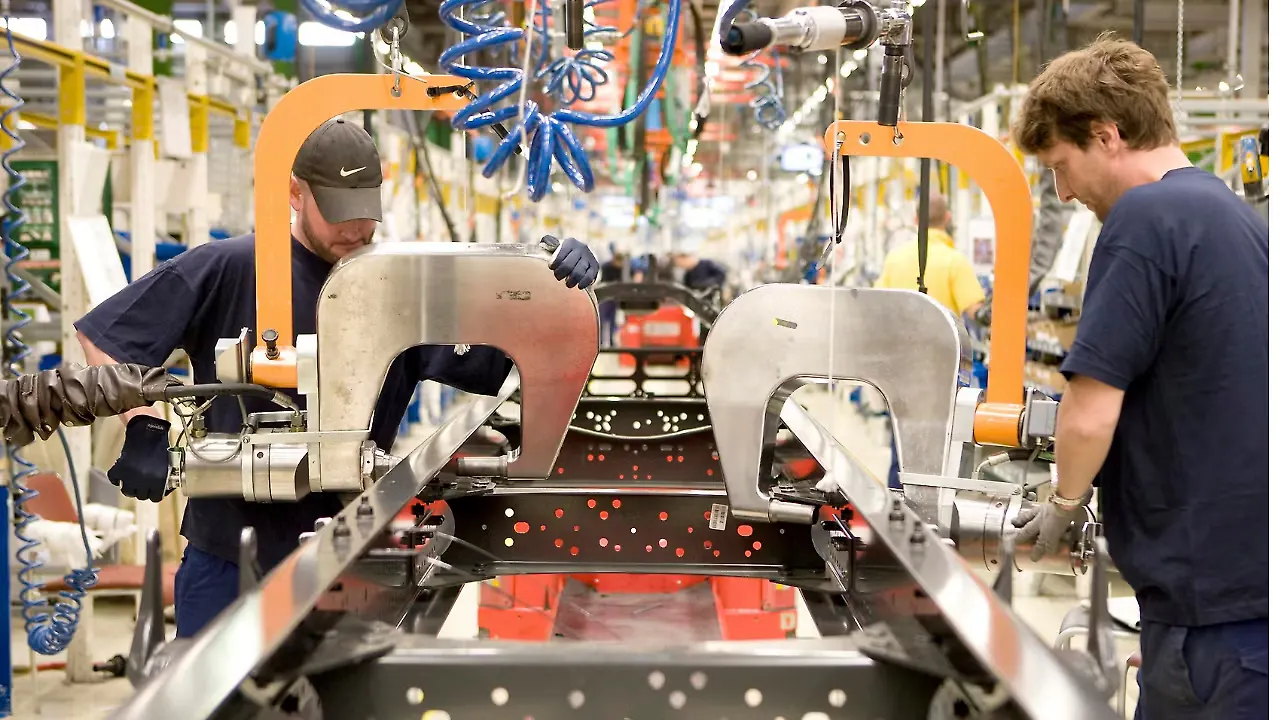
Jan Gurander is the Deputy CEO, Volvo Group since 2018. He has been the Member of the Group Executive Board since January 2014. With Volvo 1999–2001 and since 2014. His other current assignments include the Member of the Board in Teknikföretagen and Skanska AB.
How does Volvo want to achieve the target of selling electric trucks globally?
By 2030, we target to cut the CO2 emissions of our trucks & buses by 40% per vehicle km. To achieve this path, we are in the midst of a global organisation-wide business transformation to adopt emerging technologies and new business models across automation, electromobility and connectivity.
Today we sell maybe 1,000-2,000 electric vehicles per year. So, to take us from about 1% up to 35% is a significant journey. We have started the work already, along the whole value chain; it is everything from our R&D to production. Now we are making our production facilities ready to manufacture both diesel and battery electric vehicles in the same production line. We use the same line quite efficiently.
Can you tell us about your preparation for sales?
In parallel, we are preparing our sales and service network as well. Sales are much more cumbersome, and we have customers who are extremely curious and want to go into electric vehicles. However, they don’t know anything about it; they’ve been operating diesel, and therefore, they need to learn.

What kind of challenges that you foresee in selling electric trucks?
It may take ten times more effort or maybe 100 times to sell an electric truck than selling a conventional truck. This is because for the customer to recognise the benefits and how to operate the truck efficiently will take time. So, that’s the work that we are doing today. Almost all initiatives that we are taking in R&D go into electric mobility and sustainability as we cannot wait and have the product ready by 2025-26. We cannot then go from zero to 35%; that will not work.
What you will see is a kind of S-curve, and we are already in the early phase. This curve will differ from country to country depending on electricity availability and electricity prices. It will also depend on the ecosystem, including available charging infrastructure. I think it might take a little bit longer in the long haul.
In the mining sector, we might not see battery electric, but instead may have fuel cell. So, it will be very different from application to application and from country to country. Therefore, everything will not be happening simultaneously everywhere in the world.
Do you have to manage a different set of suppliers, their inventory, their outbound inventory, etc?
Absolutely. There will be new suppliers, obviously for batteries, electric motors and so on. And then we are looking into the depth of engagement with suppliers; because today we know we produce the gearbox, cylinder blocks, and we do the cab. So, what we buy and produce ourselves for electric vehicles is under re-evaluation now.
Would that mean the in-house production will be squeezed and outsourcing will increase?
Many people think so, but not necessarily. We are evaluating if we should buy all these components from others or if it makes sense to make them ourselves. We have not decided yet. It is not necessarily that we will have a lower value add in the future. If we take out the diesel trucks and buy everything for the electric trucks, then it will happen. But I’m not sure that that will happen. That is still under investigation. I think you will see a gradual increase in the depth of engagement going forward from our side.
Volvo has about three or four initiatives, including battery electric, hydrogen fuel, sustainable biofuels and also some other solutions to optimise efficiency. What will be the pecking order?
We think that we need to do all of that. We need to continue with diesel; it will take many, many years before it’s fully phased out. We needed to make it cleaner and more efficient, when it comes to different kinds of gas applications. Obviously, we see here in India a pretty big interest in gas. We will be active in all of this, and I think it depends on the application and which type of technology our customers will use.

Have you started working with the suppliers of e-mobility?
Yes, we put up requirements on our suppliers on everything to become greener. There’s no difference.
But the battery production is not green still, right?
No, when we say green, we think about how they are produced. Battery production consumes much energy. And then, it is important where the plant is put up because the amount of electricity needed to make batteries is enormous; therefore, we have to have green electricity. It doesn’t work if we have a coal plant. That is a requirement we would put up when we buy batteries that are produced with green electricity and an enormous amount of fresh water.
Are there supplier companies you are associated with to source green steel and parts made of these materials?
Yes, we have a partnership with SSAB for sourcing green steel. There are a lot of factories now that are planning to have clean steel, some in 2025 and a few others in the following years. SSAB has the capability to do it now, not in huge quantity. So we bought the first batch of green steel and then made our automated full-electric dumper.
How do you see this evolution?
We have all aspects of sustainability – the steel is green, and the battery electric is also with automation; therefore, it is safe. We don’t stop there; we will make it happen as it has created much interest. We know that we cannot do every dumper of that series because the availability of the green steel is not there yet. However, we felt it is better to start testing and be ready to do more instead of waiting for the big boom. So that’s what we did actually with SSAB.
What’s the progress with Penta in terms of sustainability?
When it comes to sustainability, particularly with trucks, they are on the same journey as we are right now. We are, for example, working with battery electric for ships and vessels as well. Work is happening in parallel. However, with Penta, it’s a little tougher because all their applications are not as suitable as trucks.
Mitigating the cost of sustainability is a big issue; how do you handle such things?
I think we are actually beyond that point where companies like ourselves think about the cost of developing and doing everything in a sustainable manner. In the last couple of years, we saw the need to be a part of the solution to the environmental problems and not be a problem ourselves. It means that it is possible in the long run to have good profitability, also with sustainable products.
We have not changed our financial targets or anything. Yes, we are increasing our R&D and Capex, and we have talked about that in the last quarterly report. Maybe we need to put more effort; perhaps we need to invest a couple of billion Euros more. But in the long run, we are going to win that game. We will be one of the winners when it comes to e-mobility and sustainability. And by that, we are convinced that we will have good profitability going forward.